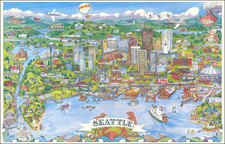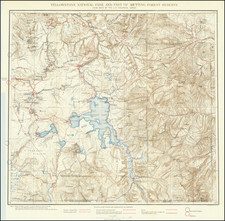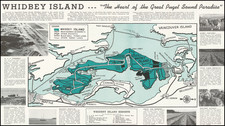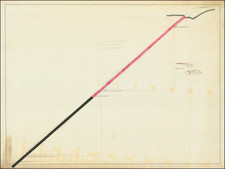Early Railroad and Exploration Map of Eastern Washington and Environs
Large map of Eastern Washington, Northeastern Oregon and Western Idaho, shaded to show the Wheat Belt of Eastern Washington.
The map would seem to have been created in order to illustrate the Wheat Belt region and the progress of explorations and surveys for the expansion of the railroad in the area.
In Eastern Washington, the map shows all or part of Stevens County, Lincoln County, Spokane County, Adams County, Whitman County, Franklin County, Garfield County, Walla Walla County, Columbia County, and Assotin County.
In Idaho, the map covers large parts of Kootenai County and Nez Perce County, along with the Nez Perce Indian Reservation.
In Oregon, the map covers large parts of Umatilla County and Union County, as well as the Umatilla Indian Resevation.
The map shows the extent of the township surveys in the region, with several large areas in the Blue Mountains of Washington and much of Western Idaho still unsurveyed.
The map explanation locates:
- Railroads in Operation
- Preliminary Railroad Lines
- Railroad Reconnaissance Lines
- Wheat Belt (lighter shading)
Along the railroad lines, each station is located. The map also provides good detail for the rivers.
We have dated the map based upon the county configurations and the Wheat Belt illustration.
Blueprint maps
Blueprint maps were among the most popular means for the swift printing of maps for which there would be a limited demand. A blueprint map could be made and/or revised much more quickly than a lithograph, cerograph, or other printing method, and at a much lower cost.
Blueprinting as a method was invented in 1842 by John Herschel, a chemist, astronomer, and photographer. A cyanotype process, one starts by drawing on semi-transparent paper, weighted down by a top sheet of paper. The paper would be coated with a photosensitive chemical mixture of potassium ferricyanogen and ferric ammonium citrate. The paper would then be exposed to light, wherein the exposed portions turned blue and the drawn lines, protected from exposure, would remain white.
The blueprint process was an improvement on the expensive and time-consuming method of hand-tracing original documents. The technique was particularly popular with architects; by the 1890s, a blueprint was one-tenth the cost of a hand-traced reproduction. It could also be copied more quickly.
Blueprint maps began to appear as early as the 1850s and 1860s, but they really began to become the standard for mining and similar limited-purpose maps by the 1880s. The ability to create these maps quickly and at a low cost made them the standard for short-run prints, ideal for mapping mining regions in the West and for similar purposes.
The method still exists today, but in a very limited fashion. In the 1940s, diazo prints (whiteprints or bluelines) became more popular, as they were easier to read and faster to make. The blue lines on a white background of these prints are now what most people call blueprints.
Rarity
The map is very rare. We have been unable to locate any other recorded examples.















![[Columbia Basin Irrigation Project] Panoramic Perspective of the Spokane Region including the Geological and Scenic Wonderland Embracing the Columbia Basin Irrigation Project and Coulee Dam . . . 1946](https://storage.googleapis.com/raremaps/img/small/77423.jpg)
![[ Early Automobile Tourism -- Pacific Coast Highways ] (Strip Maps, etc.)](https://storage.googleapis.com/raremaps/img/small/81461.jpg)